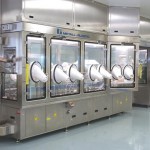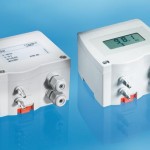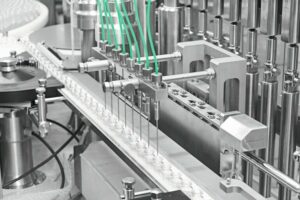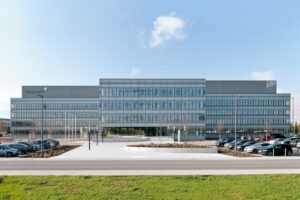Contamination control is a top priority in aseptic production processes. Airflows and pressure zones are employed regardless of the room concept, whether classic cleanrooms or isolator technology – the speciality of Metall+Plastic GmbH in the small south German town of Radolfzell. Amongst other things, this company trusts in the P26 and PS27 differential pressure transmitters for precise control of airflows and pressure parameters.
Strict separation of the product from the producer is essential in aseptic production processes in order to prevent product contamination. The same applies when highly active substances are processed, for example in the manufacture of cytostatic drugs. A variety of high-tech solutions are resorted to in order to achieve the required protection for people and the environment – from classic cleanroom concepts to isolator technology. “Isolators reflect the latest state of the art in operator and product protection”, explains Lennart von Stenglin, Head of Documentation at Metall+Plastic Cleanroom Technology. This family-owned firm at the western end of Lake Constance is a glob-al leader when it comes to maintaining sterile conditions in pharmaceutical processes. In addition to isolators, its portfolio also includes e-beam tunnels, gas-tight doors and H2O2 decontamination transfer chambers.
A glance at a typical fault scenario makes it plain why von Stenglin refers to his company´s isolator technology as the latest state of the art for cleanroom applications. The process units in a conventional cleanroom stand in a directed airflow with little turbulence (laminar flow). In the event of a fault, the operator can open the machine guard immediately from the environment (class B) and carry out any necessary re-pairs under laminar flow (class A). However, this inevitably entails microbiological and particulate risks and the transfer processes cost time and money. Providing the primary packaging permits the use of an isolator, the latter increases the safety of the pharmaceutical process by ensuring the strict separation of personnel and the environment on the one hand and the product on the other.
Multiple measuring tasks
An isolator has its own ventilation for controlling pressure, temperature and humidity with an airflow that is specially tailored to the respective application. Pressure zones with a positive or negative pressure cascade can be defined, depending on whether operators or products need to be protected. The various measuring tasks that must be performed in this connection are mastered using differential pressure transducers. Very precise pressure measurements are vital to actually maintain the pressure in the isolator. The P26 model, which is predestined for monitoring pressure in cleanrooms and sterile atmosphere, is generally used for this purpose. This smart transducer measures not only differential pressure data but also positive and negative overpres-sure and is designed for measurement ranges from ±10 Pa to ±100 kPa. Within this range it can be freely scaled by the user from 10 to 100 % at any time directly on site. The output characteristics can likewise be configured – as either linear or square root-extracted – for measuring the volumetric flow rate, while time constants allow the device to be used under fluctuating pressure conditions and generate a stabilised output signal. Even the switching outputs of the two optional contact points, which enable the user to connect visual or audible alarms, are adjustable. “Thanks to their high level of accuracy and long-term stability, these instruments are tailor-made for our isolators”, Thomas Bertsche, responsible for Design and Development at Metall+Plastic Cleanroom Technology, confirms.
Volumetric flow measurements are another of the measuring tasks performed by the P26 differential pressure transducer that convinced Bertsche to opt for Halstrup-Walcher instruments. Compared to other alternatives, such as measurements with an anemometer, he particularly appreciates the ability to calibrate the pressure measurement capsule easily on site. He also uses Halstrup-Walcher technology to monitor the filters in the fans. “The fact that we use differential pressure transducers to do this has the advantage that we can communicate the filter dirt load directly to the control system or the control centre in the form of a 4…20 mA signal”, Bertsche continues. The PS27 differential pressure transducer is ideally suited for this purpose. Very little zero-point drift (0.1 %/K), hysteresis (0.1 %/K) and temperature dependence are the hallmarks of this instrument. With its high level of sensitivity, it measures air and all non-aggressive gases in ranges from ±100 Pa to ±100 kPa. Its linearity is 1.5 % FS and a jumper is available for selecting the output signal. Contact points with an adjustable switching output can be supplied as an option.
Online-Info: www.cpp-net.com/0311422
Share:








